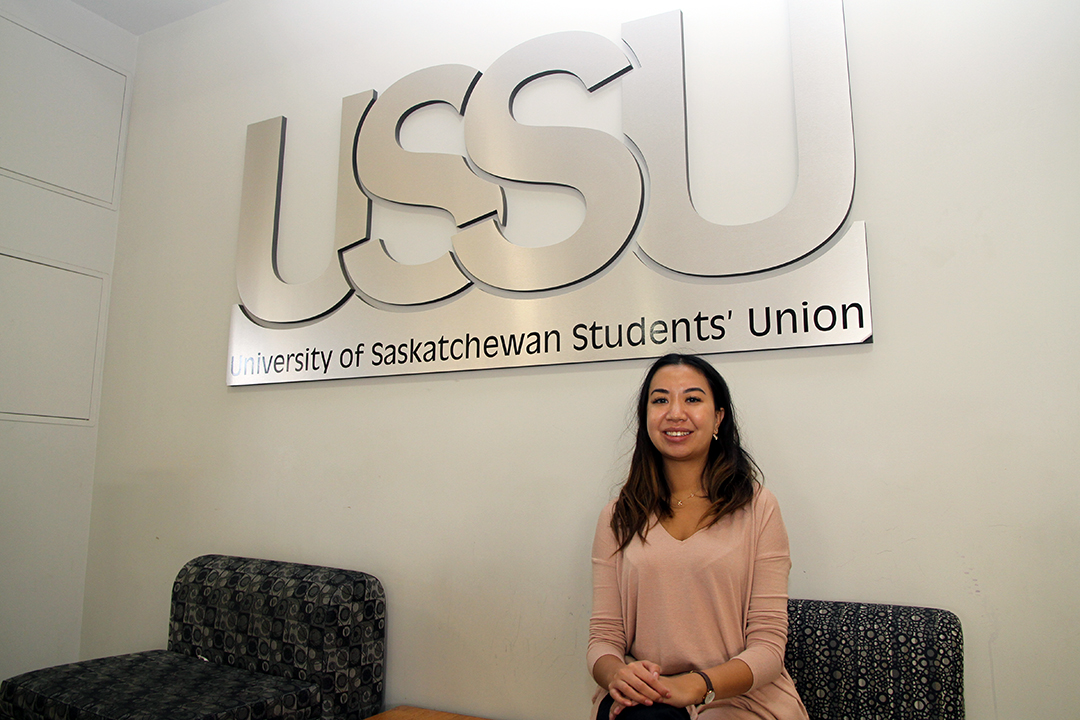
Undergrad research a stepping stone to academic life
Whether it’s a poster, a project or a painting, undergraduate research is a way for young scholars to gain valuable academic experience and showcase their top-notch work.
By Lesley PorterThese were key takeaways from the University of Saskatchewan Students’ Union (USSU) Undergraduate Project Symposium, held Feb. 5.
Now in its sixth year, the symposium’s goal is to highlight and engage with undergraduate students who participate in research, scholarly and artistic work.
The event is run by the USSU with support from the Gwenna Moss Centre for Teaching and Learning and the undergraduate research initiatives unit within the Office of the Vice-President Research.
“The work that our undergraduate students are doing is amazing and it certainly deserves to be recognized,” said Jessica Quan, USSU vice-president academic affairs. “I think that’s the one thing that a lot of participants appreciate—the cash awards are one thing, but it’s also that recognition that they get.”
This year’s event featured a total of 32 entries. Apart from the traditional award categories—sciences and engineering, social sciences, humanities and fine arts, people’s choice, and signature research area—this year’s symposium introduced three new awards recognizing artistic engagement, city-building and Indigenous engagement (see sidebar for winners).
U of S President Peter Stoicheff and Gregory Burke, CEO and executive director of the Remai Modern, presented the University President and Remai Modern Award in Artistic Engagement. Stoicheff presented another award—the University President and Mayor’s Award in City-Building—alongside city councillor Hillary Gough.
It was two recent MOUs the university signed or was about to sign—with the Remai Modern and the City of Saskatoon, respectively—that led Quan to pursuing each of those awards.
“I saw that as being a tangible outcome of those MOUs and I was really pushing for it,” she said, adding that both parties were receptive.
Additionally, Vice-Provost of Indigenous Engagement Jackie Ottmann was at the symposium to present an award, sponsored by her office, for the project that best represented Indigenous engagement.
“Given that our university is moving in the direction of indigenization, from the student perspective there tends to be a lot of talk and big words being tossed around, but what’s the actual tangible outcome of them?” Quan asked. “Having an award, that immediate recognition, was a good way to move the process along, while also recognizing that this is important.”
Going forward, Quan would like to see more fine arts students participate.
“There tends to be a perception that it’s predominantly science-based projects, but we’re really trying to make an inclusive culture that really highlights the artistic discovery element,” she said.
This year, she connected with arts faculty members to encourage them to shoulder-tap students in their classes to submit their work. This also served as motivation behind the new Remai Modern award as well, and Quan hopes it acts as an incentive in years to come.
“I hope the award sets the precedent and we have it again next year so that slowly more arts students will start to participate in the event,” she said.

